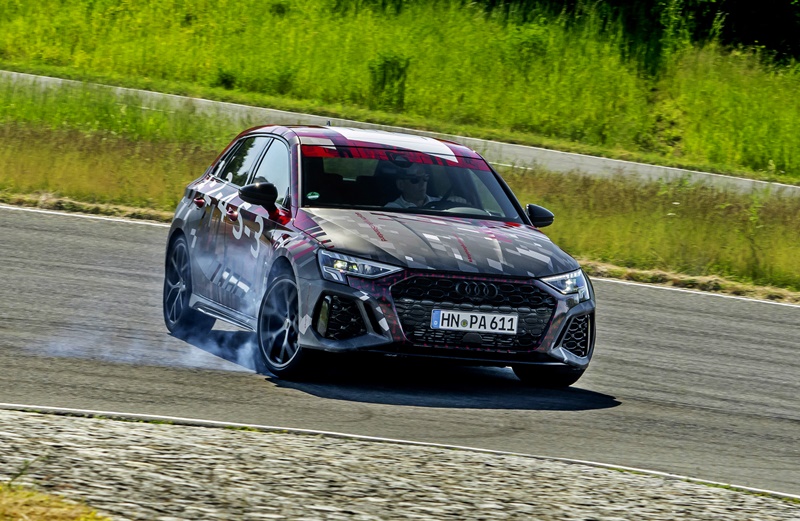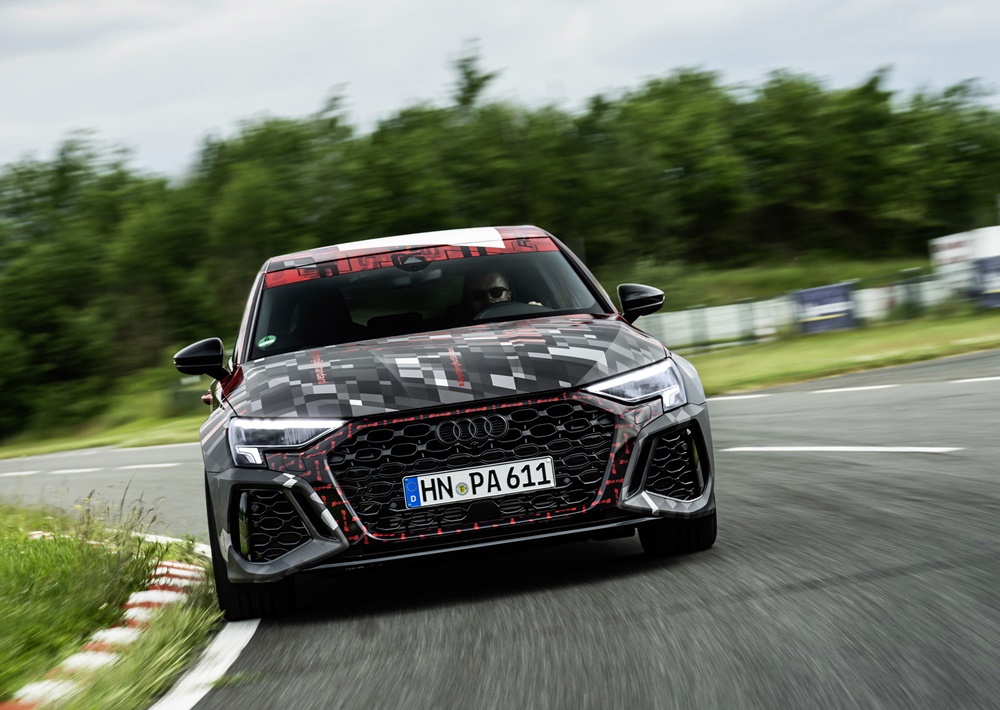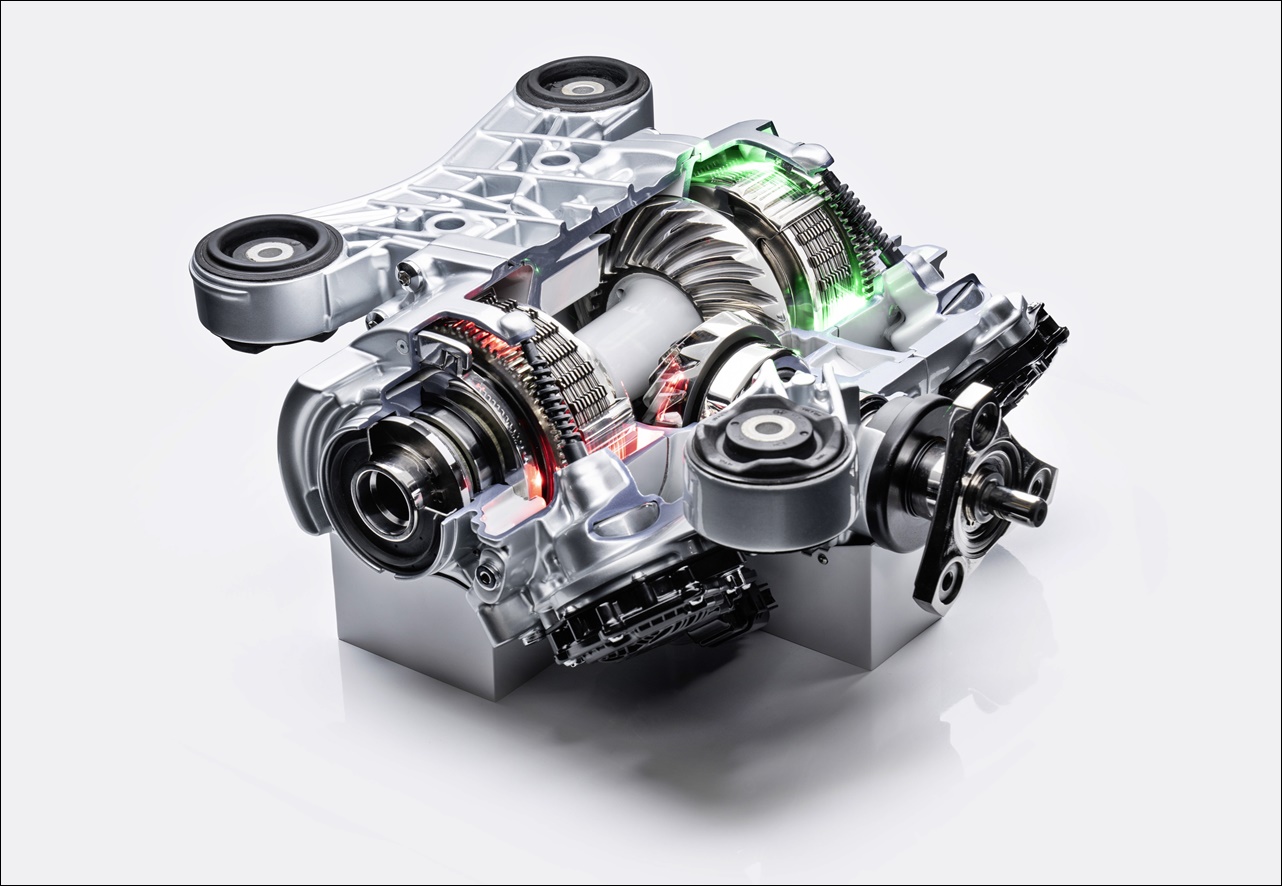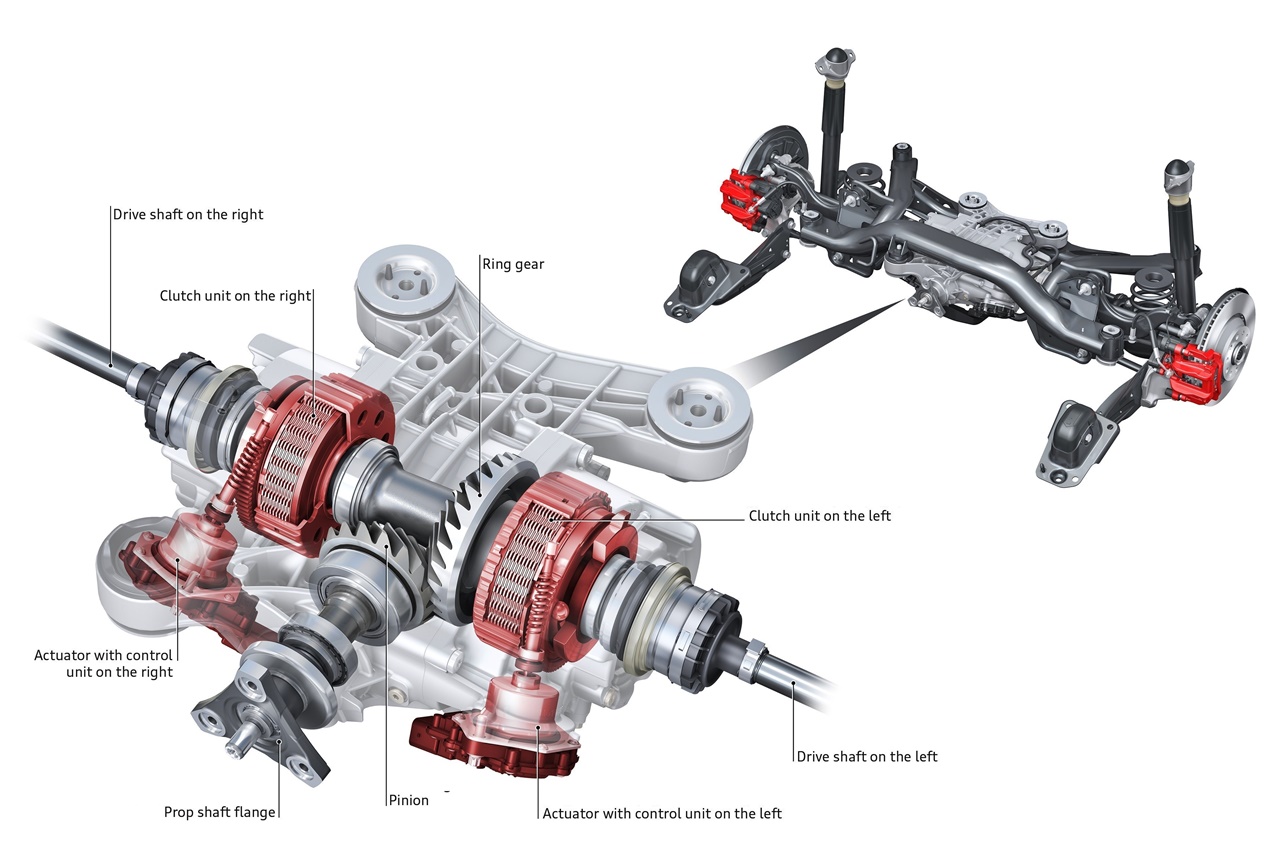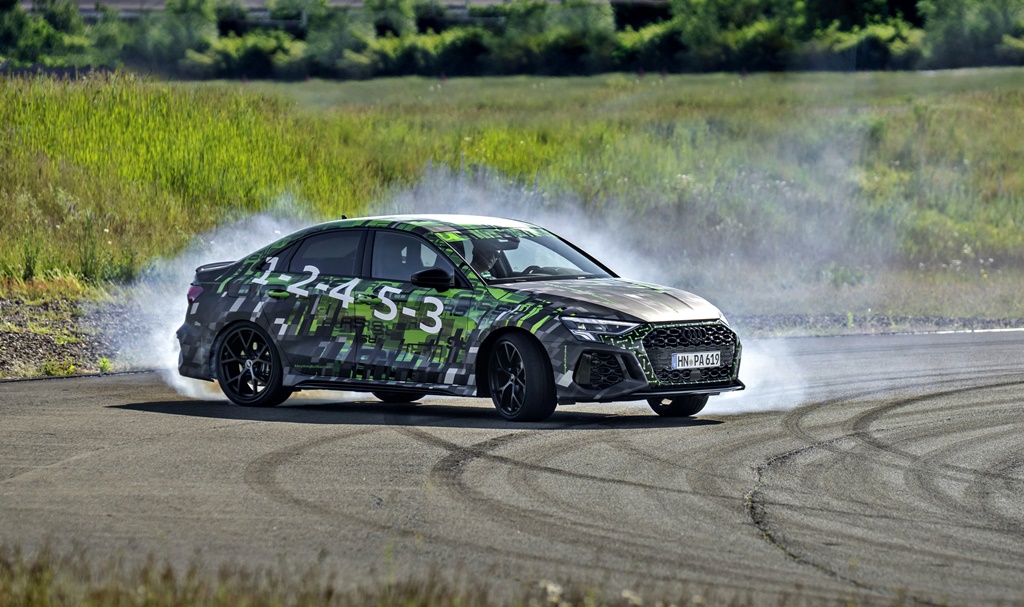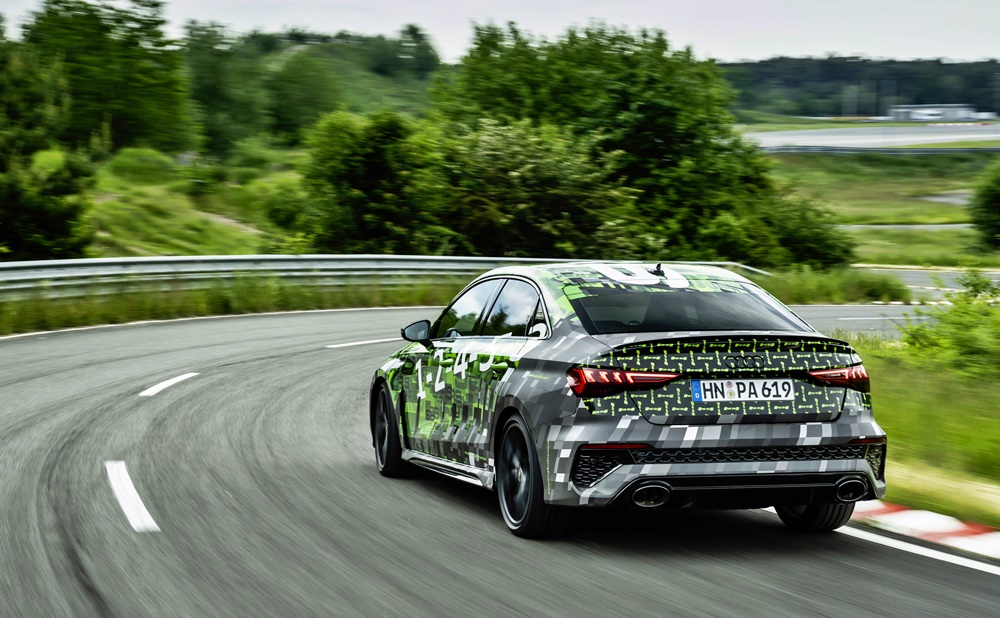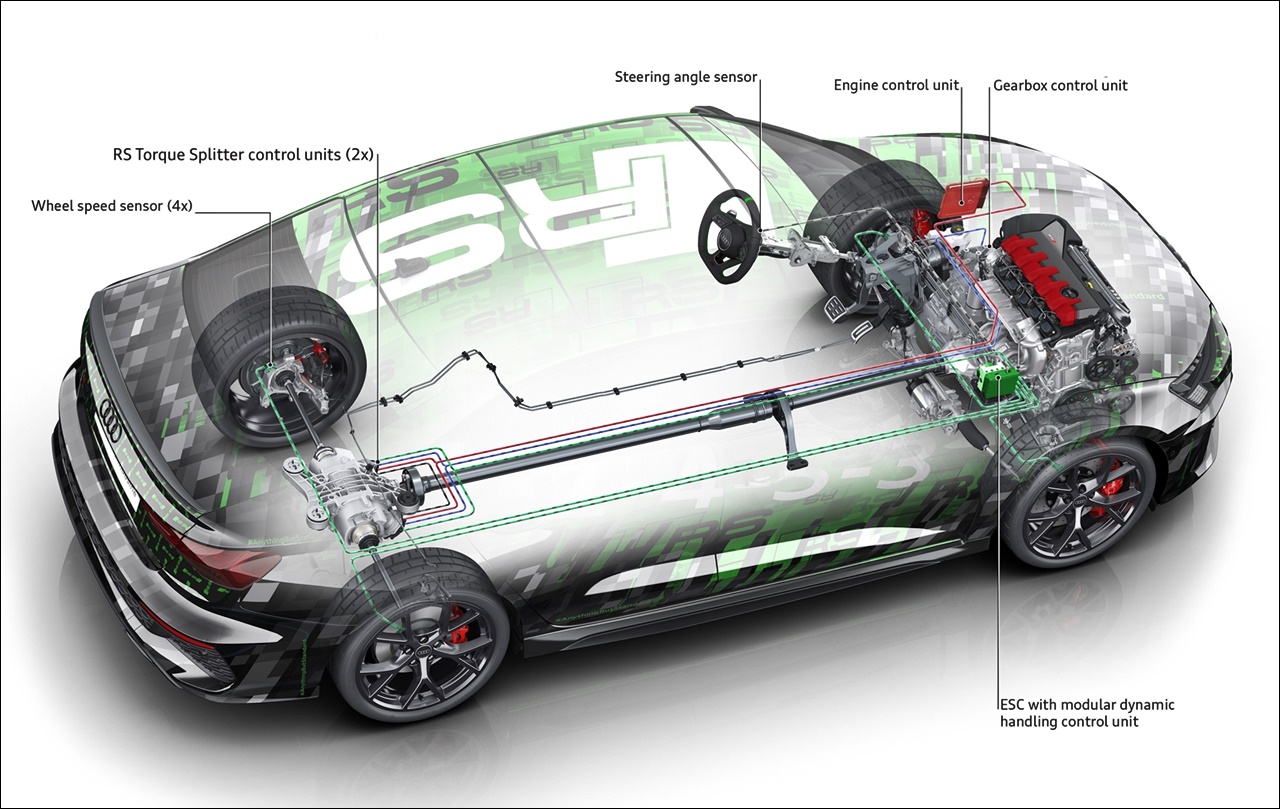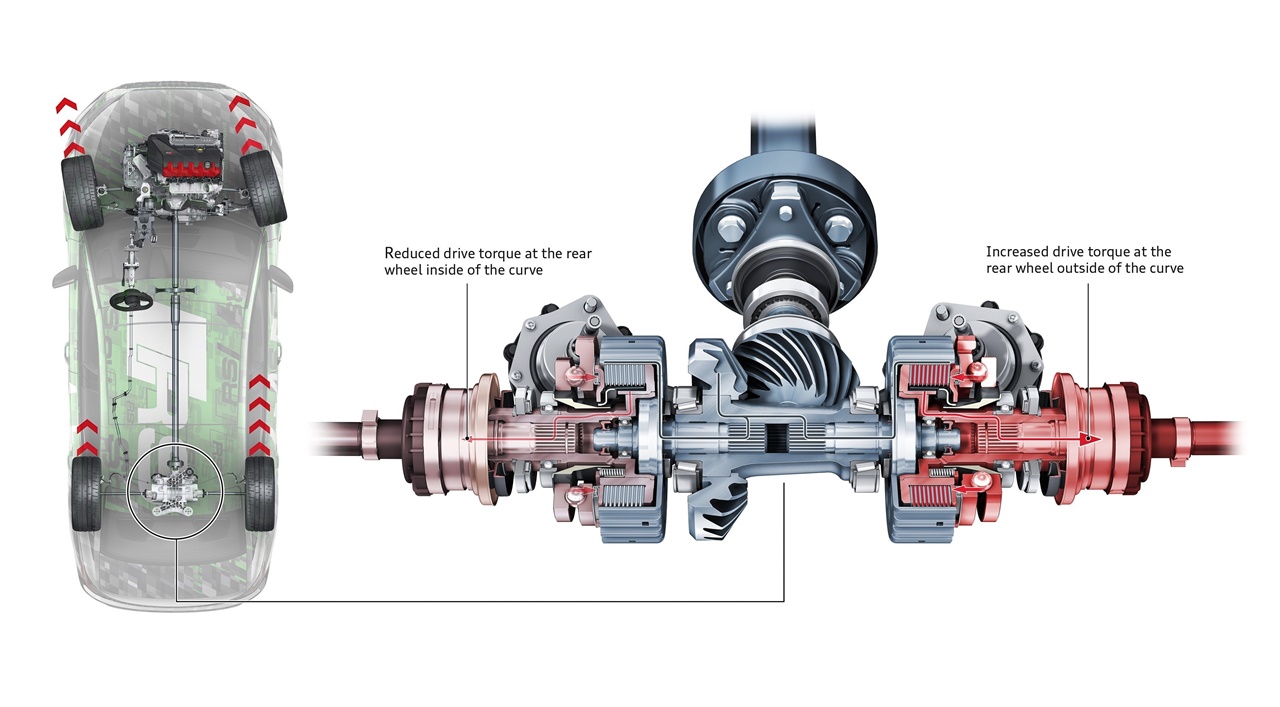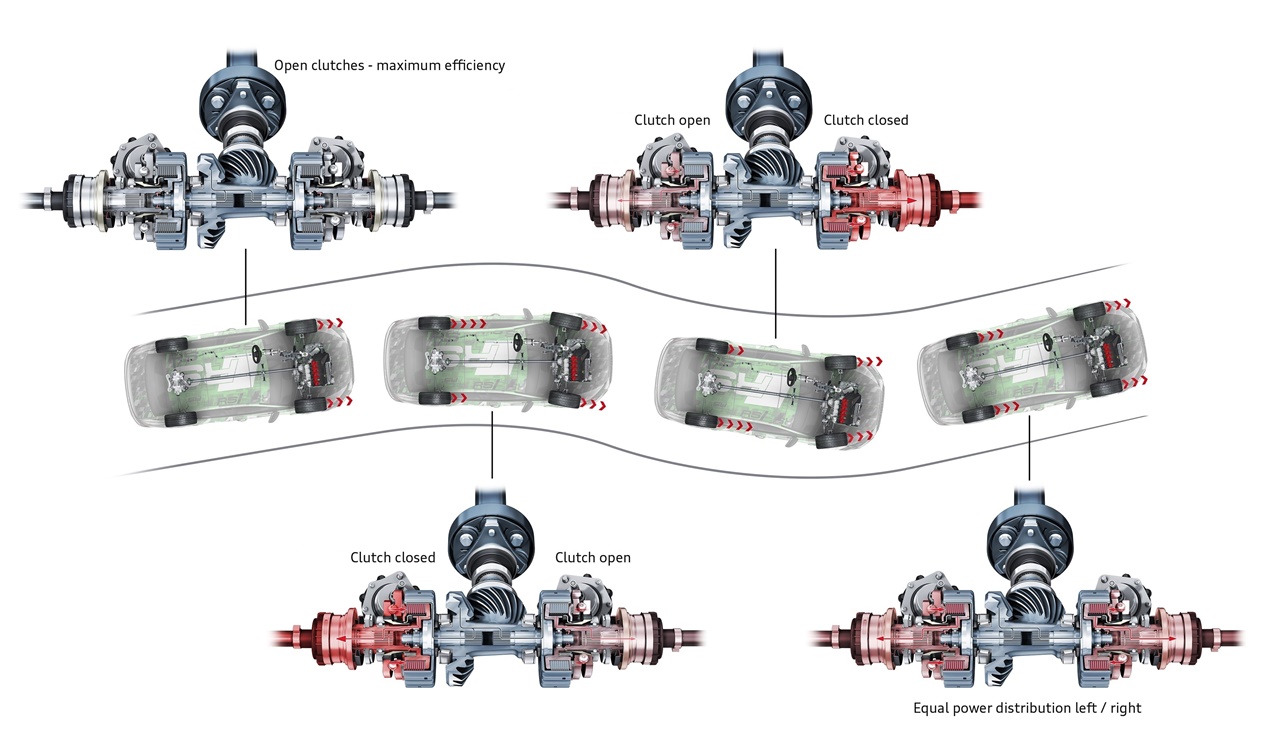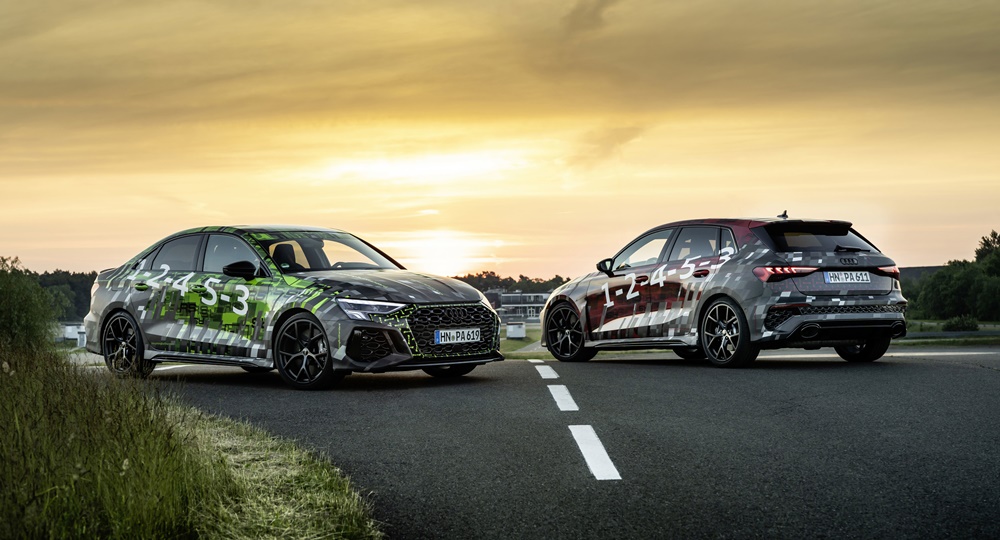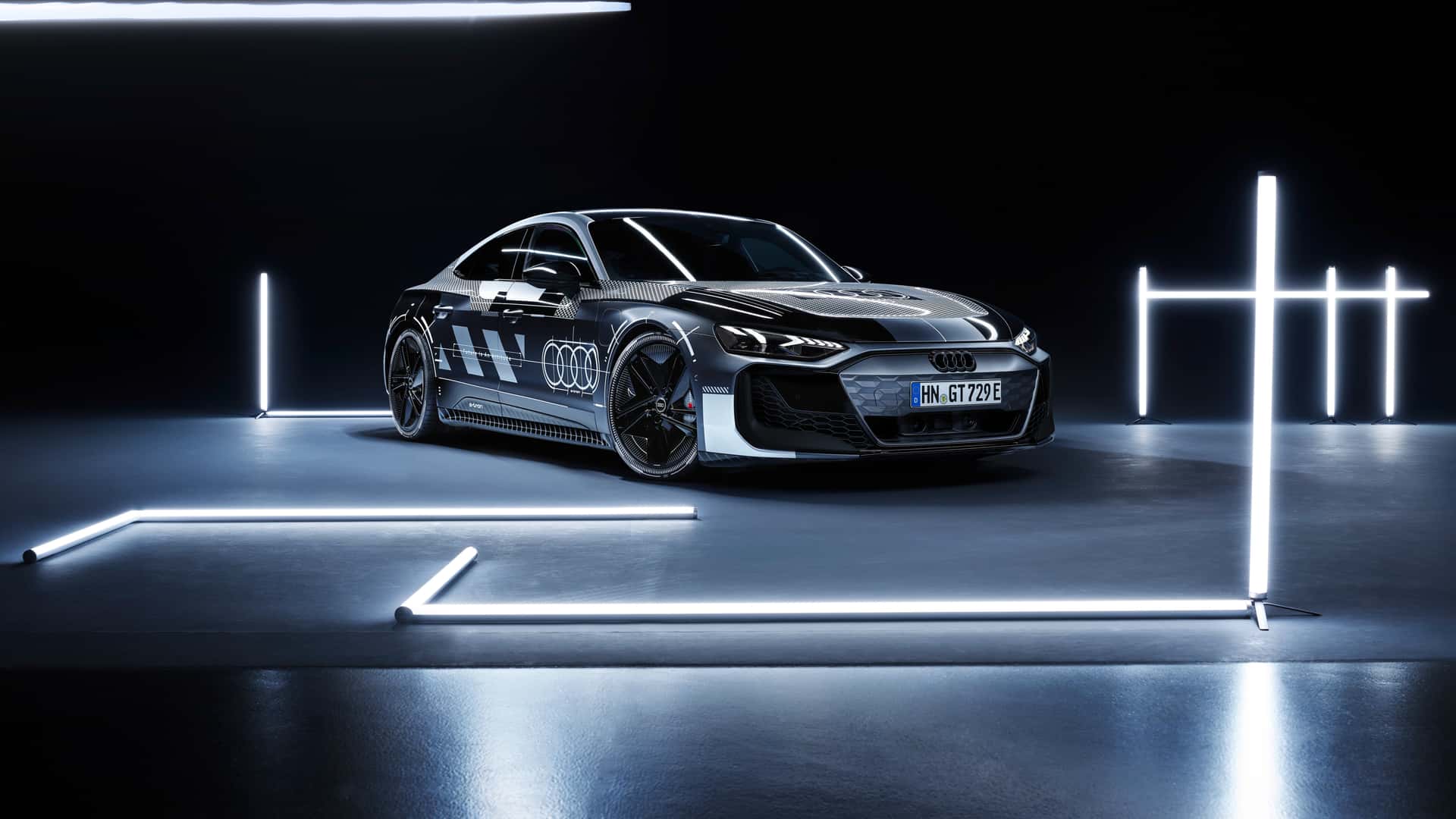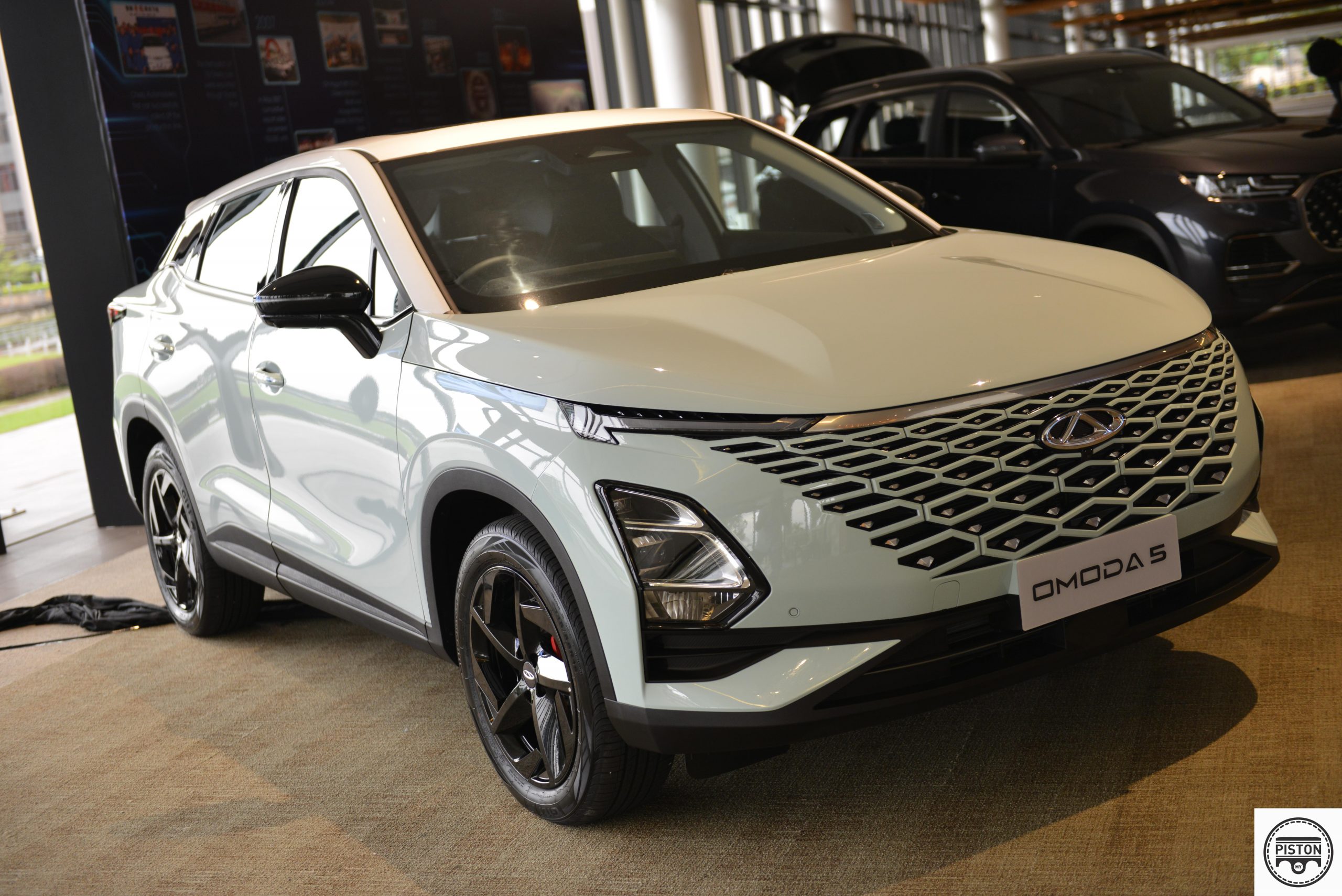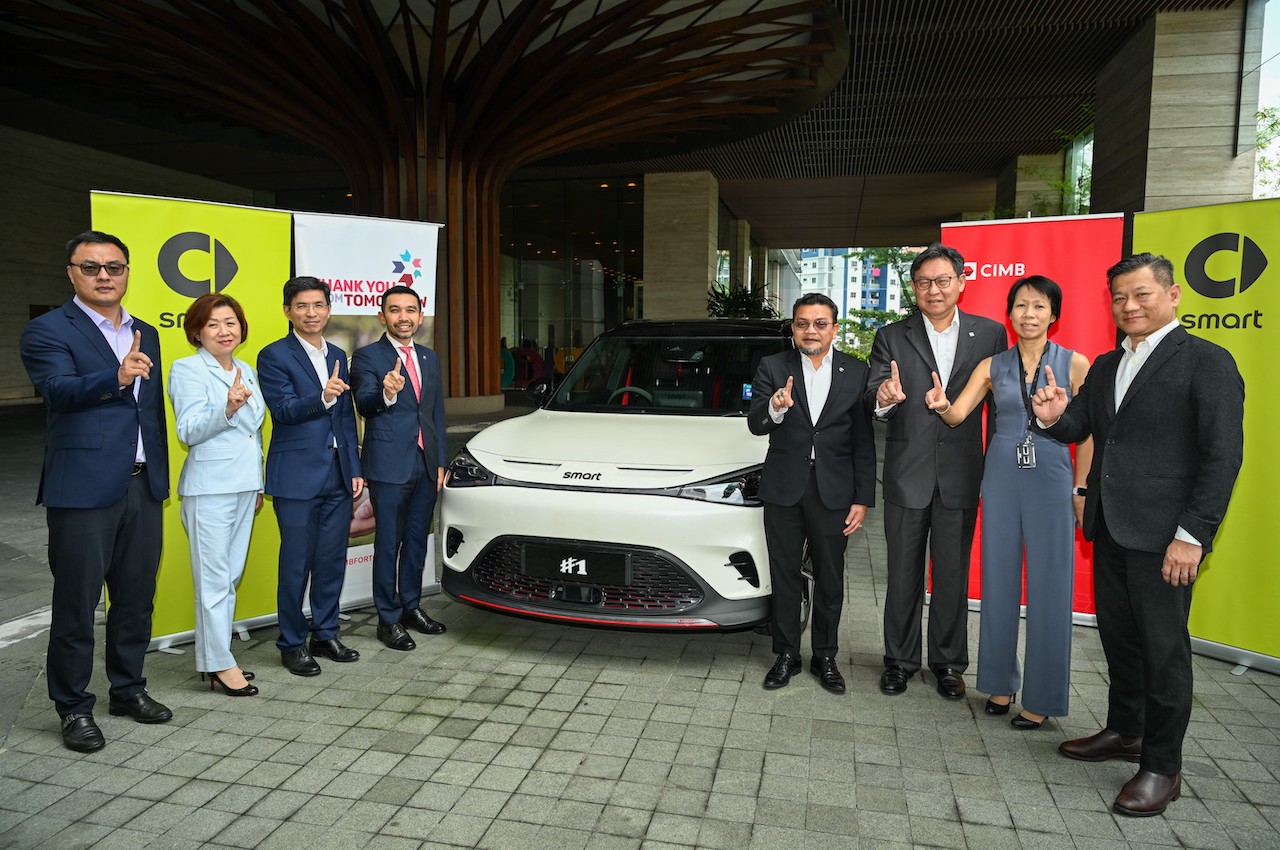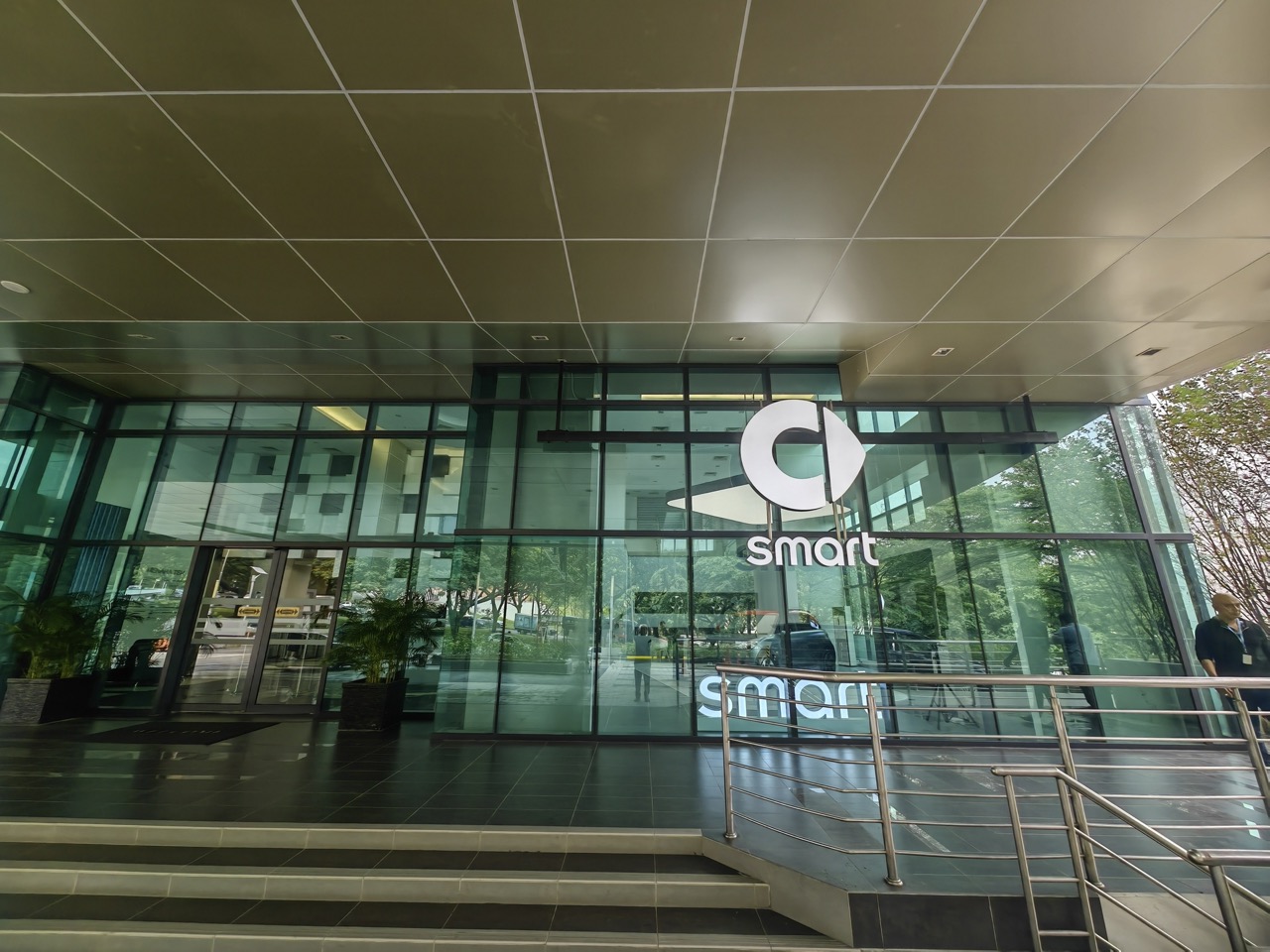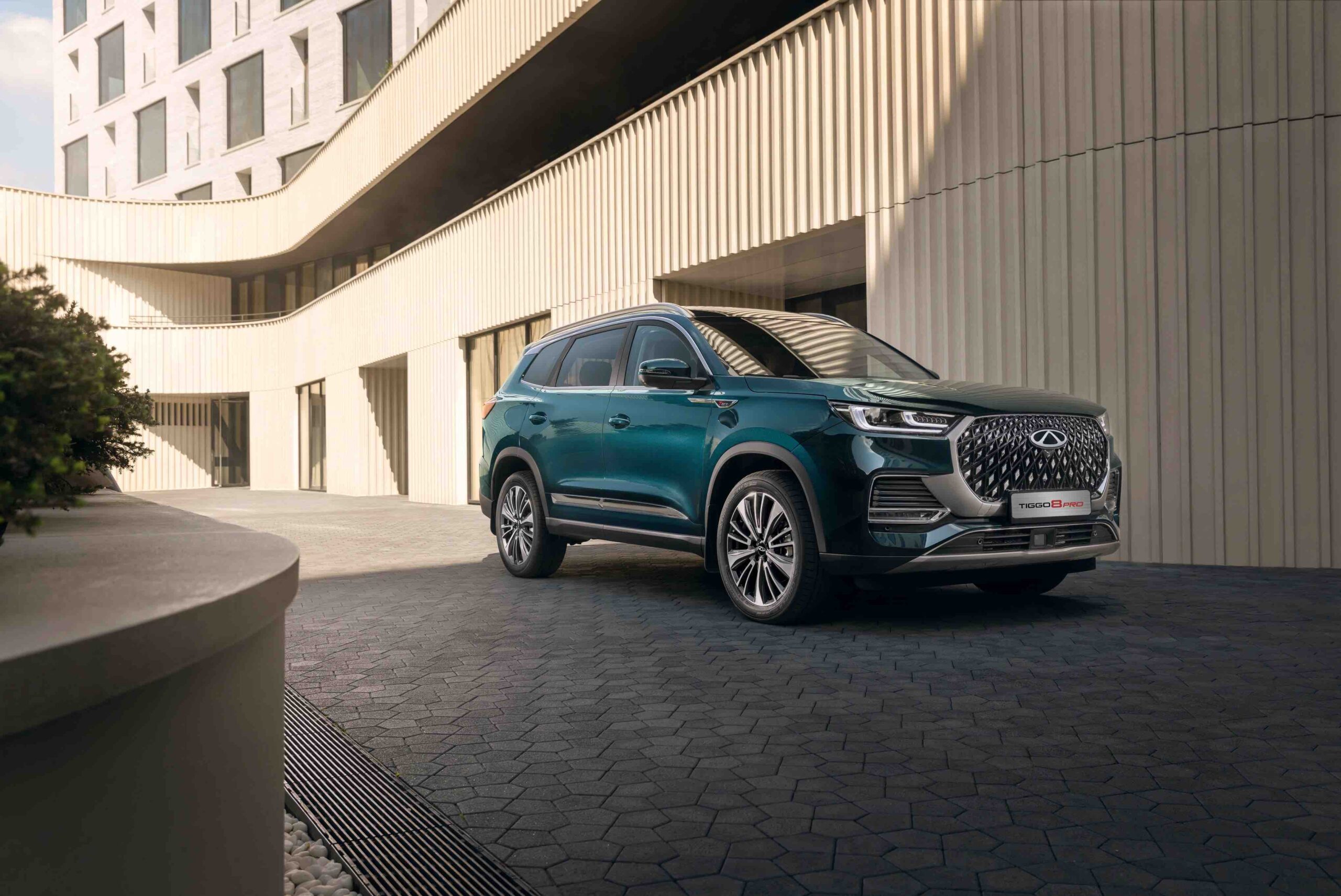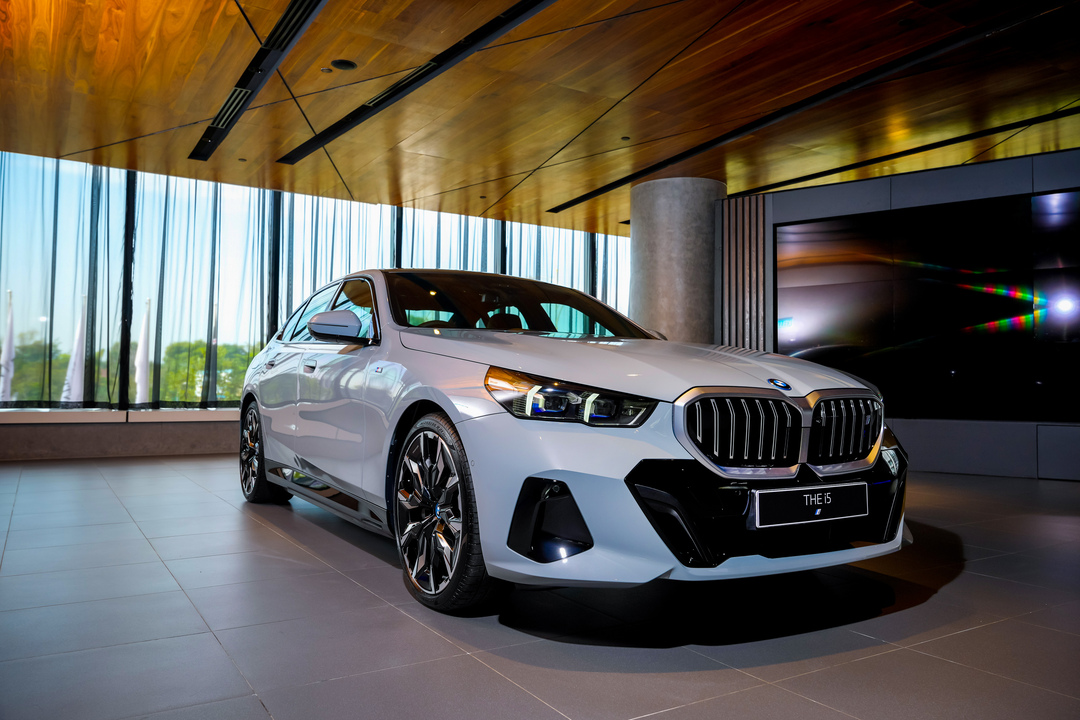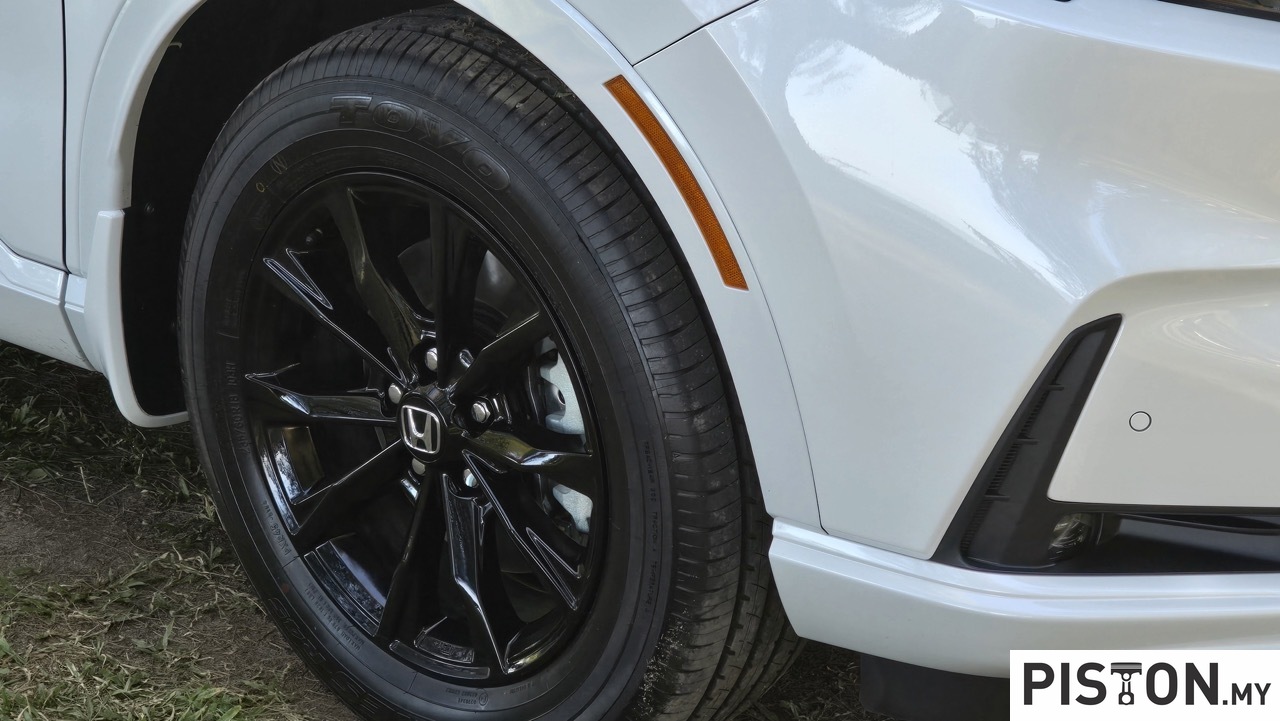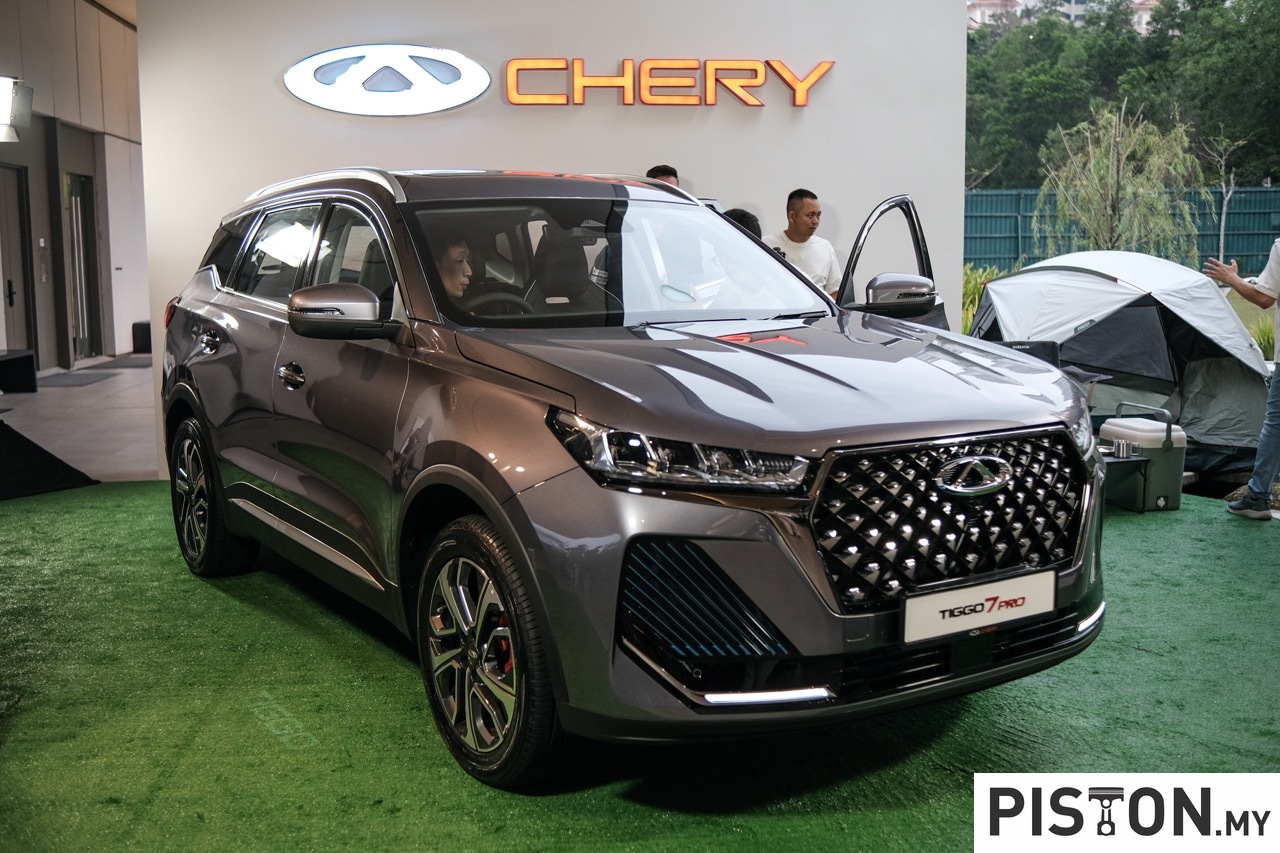To most people, all the four wheels of a car rotate at identical speeds all the time. But this is not so and between the left and right wheels, there is a difference in rotating speeds. If the car is turning to the left, the wheels on the left side will rotate more quickly than those on the inside because the former has to travel a great distance around a curve.
This is where a differential comes in to enable the wheels on the outside to rotate at different speeds without dragging the wheels, which would damage the tyres. This approach has been used for many decades and in more recent times, engineers have developed systems to more efficiently split the distribution of torque between the wheels and enhance driving dynamics.
The RS Torque Splitter (shown above) in the Audi RS 3 prototype is one of the latest innovations in this area as it distributes drive torque between the rear wheels in a fully variable manner. This results in optimal stability and maximum agility – especially when cornering at high speeds.
How does it work?
The RS Torque Splitter makes active, fully variable torque vectoring between the rear wheels possible. Unlike the rear axle differential and the previous multiple disc clutch package on the rear axle, the torque splitter uses one electronically-controlled multiple disc clutch each on the respective drive shaft. During dynamic driving, the torque splitter increases the drive torque to the outer rear wheel with the higher wheel load, which significantly reduces the tendency to understeer.
In left-hand curves, it transmits the torque to the right rear wheel, in right-hand curves to the left rear wheel, and when driving straight ahead to both wheels. This results in optimal stability and maximum agility – especially when cornering at high speeds.
When driving on closed roads, the torque splitter enables controlled drifts by applying all of the engine power at the rear axle to just one of the rear wheels – up to a maximum of 1,750 Nm of torque. The exact distribution of drive torque always depends on the mode selected in Audi drive select and the respective driving situation.
Each of the two multiple disc clutches has its own control unit, which use the electronic stabilization control’s wheel speed sensors to measure the wheel speeds. Other influencing factors include longitudinal and lateral acceleration, the steering angle, the position of the gas pedal, the selected gear, and the yaw angle, ie the rotational movement around the vertical axis. In addition, the torque splitter is connected to the modular vehicle dynamics controller as a higher-level entity.
Due to the difference in propulsive forces, the car turns into the curve even better and follows the steering angle more precisely. This results in less understeer, earlier and faster acceleration when exiting corners, and particularly precise and agile handling – for added safety in everyday use and faster lap times on the racetrack. The torque splitter also compensates for oversteer by directing the torque to the wheel on the inside of the curve or, if necessary, to both wheels.
Integrated into the driving dynamics system
Audi’s Drive Select modifies the characteristics of the torque splitter and thus the car’s handling. Five characteristic curves – Comfort/Efficiency, Auto, Dynamic, RS Performance, and RS Torque Rear – are saved in the system. In this context, engine power is distributed to all four wheels in the Comfort/Efficiency modes, with priority given to the front axle.
In Auto mode, torque distribution is balanced, which means that the car neither understeers nor oversteers. Dynamic mode, on the other hand, tends to transmit as much drive torque as possible to the rear axle – for maximum agility and increased dynamics. This is taken to perfection in RS Torque Rear mode, which allows drivers to perform controlled drifts on closed roads.
The highly rear-heavy distribution of the engine power leads to oversteering behaviour, with up to 100% of the drive torque directed to the rear ending up at the wheel on the outside of the curve. In addition, Audi engineers have adjusted the engine and transmission characteristics.
This specific setup is also used by RS Performance Mode, which is designed for the racetrack. It is specially tuned to the Pirelli P Zero ‘Trofeo R’ performance semi-slick tyres. In this mode, the torque splitter delivers a particularly dynamic, sporty ride along the longitudinal axis with as little understeer and oversteer as possible. This results in fast acceleration out of corners and thus better lap times.
The modular vehicle dynamics controller
The modular vehicle dynamics controller (mVDC) ensures that the chassis systems interact more precisely and more quickly. To do so, this central system captures data from all the components relevant to lateral dynamics. The mVDC synchronizes the torque splitter’s two control units, the adaptive dampers, and the wheel-selective torque control for high-precision steering and handling.



